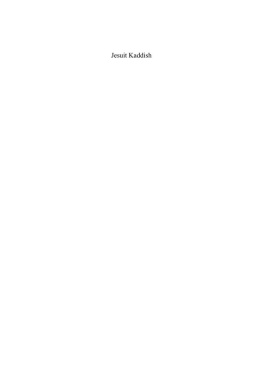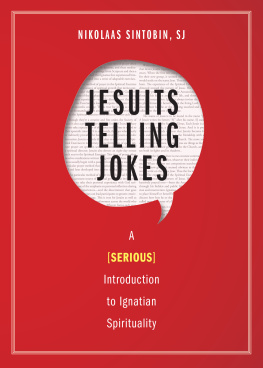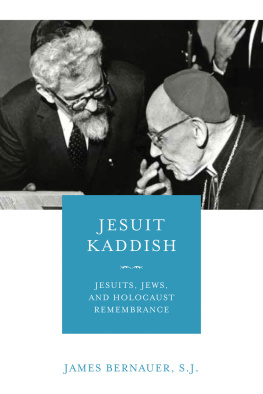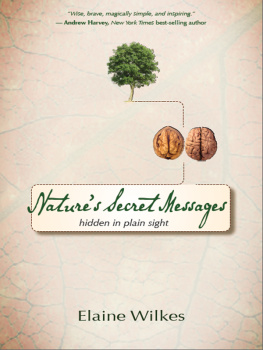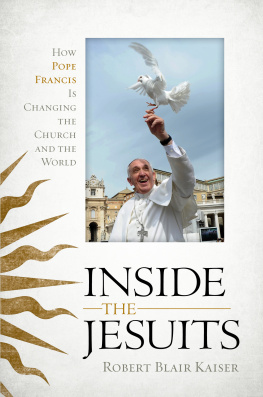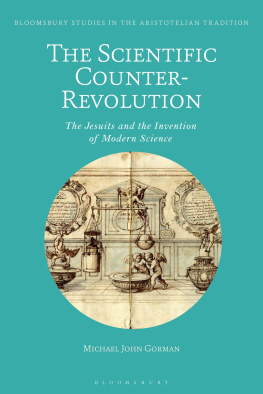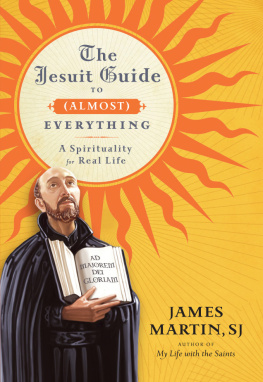JESUIT SCIENCE AND THE END OF NATURES SECRETS
For Maggie
Jesuit Science and the End of Natures Secrets
MARK A. WADDELL
Michigan State University, USA
ASHGATE
Mark A. Waddell 2015
All rights reserved. No part of this publication may be reproduced, stored in a retrieval system or transmitted in any form or by any means, electronic, mechanical, photocopying, recording or otherwise without the prior permission of the publisher.
Mark A. Waddell has asserted his right under the Copyright, Designs and Patents Act, 1988, to be identified as the author of this work.
Published by
Ashgate Publishing Limited
Wey Court East
Union Road
Farnham
Surrey, GU9 7PT
England
Ashgate Publishing Company
110 Cherry Street
Suite 31
Burlington, VT 054013818
USA
www.ashgate.com
British Library Cataloguing in Publication Data
A catalogue record for this book is available from the British Library
The Library of Congress Cataloging-in-Publication Data has been applied for
ISBN 9781472449726 (hbk)
ISBN 9781472449733 (ebk-PDF)
ISBN 9781472449740 (ebk-ePUB)
Contents
List of Figures
Acknowledgements
This project has been more than a decade in the making, which means I have a lot of people to acknowledge.
Many years ago, at the University of Calgary, I wrote a fateful essay for a class taught by Maggie Osler. As it happened, that classand that essaychanged my life. Maggie became a mentor, and then a friend. She refused to accept anything but my best effort, and as I ventured off into the wilds of academe she was both my biggest supporter and my most incisive critic. I will always be grateful to her, as well as tremendously saddened that she did not live to see this book appear in print.
Larry Principe continued the work that Maggie started, and his encyclopedic knowledge, inexhaustible patience, and dry wit remain as valuable now as when I was his student at Johns Hopkins. I have learned a great deal from him, and his example continues to inspire me.
Research for this book has benefited from the support offered by several institutions, including a Smithsonian Institution Graduate Student Fellowship, a Roy G. Neville Fellowship awarded by the Chemical Heritage Foundation, and the Charles S. Singleton Fellowship awarded by the Johns Hopkins University. I also want to thank the Folger Institute, and Jim Bono, for the Imagining Nature colloquium that took place in 20032004, where I found the opportunity to present the first seeds of this book to an enthusiastic and welcoming group of fellow scholars.
The many, many iterations of this project have been reviewed more often than I would like to remember. Not all of the anonymous reviewers were kind, but all of them were useful in one way or another, so they have my thanks. My particular gratitude goes to Audra Wolfe, for her insightful editorial help, and to Mark Largent and Liam Brockey, who both provided valuable feedback on this manuscript.
I would not have persevered in this process, nor survived those many reviews, without the support of a great many friends and colleagues, including Michael Austin, Jeff Bale, Jen Baggot, Kendra and Jubin Cheruvelil, Jeremy Herliczek, Allison Kavey, Susan Lamb, Tulley Long, Georgina Montgomery, Cheryl Murphy, George Oppel, Manon Parry, Katie Reinhart, Robby Richardson, Sophie Rollins, Steve Stowe, Naoko Wake, Pam Warren, and (because she asked to be included) Cassie Wieckhorst.
I want to thank my familynear and far, extended and otherwisefor their support as I struggled to make this book a reality. My mother, Margaret, passed away long before I started this project, but I think that she would be proud to see it finally finished.
Last, but never least, I want to thank Matt, my fixer of innumerable problems, who has managed to be all things to me.
Introduction
This book is about a quest for clarity, one that took place at a moment of perilous uncertainty for European intellectuals. Beginning in the early sixteenth century, thinkers in Europe began to question the entire endeavor of natural philosophy, thanks in part to the recovery and translation of several ancient works on skepticism. Until this point, Western philosophy had descended almost entirely from Aristotle, who had taught that the only real knowledge was certain knowledge of the causes of things, acquired through both observation and the logical syllogism. The ancient skeptics, however, had taught that certain knowledge was impossible; the most extreme had believed that we can never know anything at all. Sextus Empiricus (ca. 200 CE), who was cited frequently by early modern thinkers, had expanded upon the ideas of Pyrrho of Elis (ca. 360 BCE) by arguing that the appearances of things might offer a way of knowing something about the world, but like Pyrrho and other skeptics, he questioned whether attaining knowledge was possible. Already struggling to assimilate the massive amounts of information flooding into Europe from the New World and Asia, a wide range of thinkers began to question not only the pursuit of knowledge but also the intellectual foundations of Western thought.
Changes in how philosophers conceived of the study of nature affected early modern thought in profound ways. The utility of the senses, especially vision, was called into question to such a degree that some, like Ren Descartes (15961650), devised entire philosophical systems founded on rational thought instead of the senses. Others, like Robert Hooke (16351703), embraced technological crutches such as the telescope and microscope in an effort to make the eyes
Shifting conceptions of knowledge were a key part of the changing currents in early modern natural philosophy. Even so, historians of science first linked these developments almost exclusively with the innovative reformers of the seventeenth century, men that included Bacon, Descartes, Isaac Newton (16421727), and the others that still populate the hagiography of the so-called Scientific Revolution.
Because many of those in Catholic orders were constrained by Church doctrine and politics, however, they often found it difficult to endorse publicly some of the novel theories that emerged in the sixteenth and seventeenth centuries, and this seeming reticence on the part of many Catholic intellectuals has made it easier for contemporaries and historians alike to overlook these contributions to the history of science.
Foremost in such contributions were the Jesuits, the colloquialism applied to members of the Society of Jesus, which was founded in 1540 with the approval of Pope Paul III and led for almost two decades by Ignatius Loyola (14911556). Ignatius conceived of the Society originally as an order of itinerant missionaries, and within a decade of its founding its members began to spread throughout the known world. Even before Loyolas death in 1556, however, the direction of the Society started to change. Though Jesuit missionaries continued to travel to far-flung corners of the world, education became increasingly central to the Societys larger mission. Their colleges multiplied across Europe and beyond, founded wherever Jesuit missionaries and educators could establish a lasting presence, and it was in and around these colleges that the Jesuit study of the sciences took root.
The precepts that governed Jesuit life and thought demanded public adherence to the philosophical doctrines of Aristotle. Throughout the seventeenth century, however, Aristotelianism was under attack in the universities, coffeehouses, and salons of an increasingly skeptical Europe, and
Thus, what exactly constitutes Jesuit science remains a thorny question for modern scholars, much as it did for early modern Jesuits themselves. Philosophers within the Society of Jesus were constrained by the rules that defined their intellectual lives, and their works subject to censorial oversight. In spite of these restrictions, however, the Jesuits of the seventeenth century were not marginal or ambivalent participants in the intellectual culture of their day. As this study will demonstrate, some highly visible members of the Society dared to question the fundamental tenets of their shared philosophy, grappling with questions about certainty, the utility of the senses, and their implications for the study of nature.
Next page

